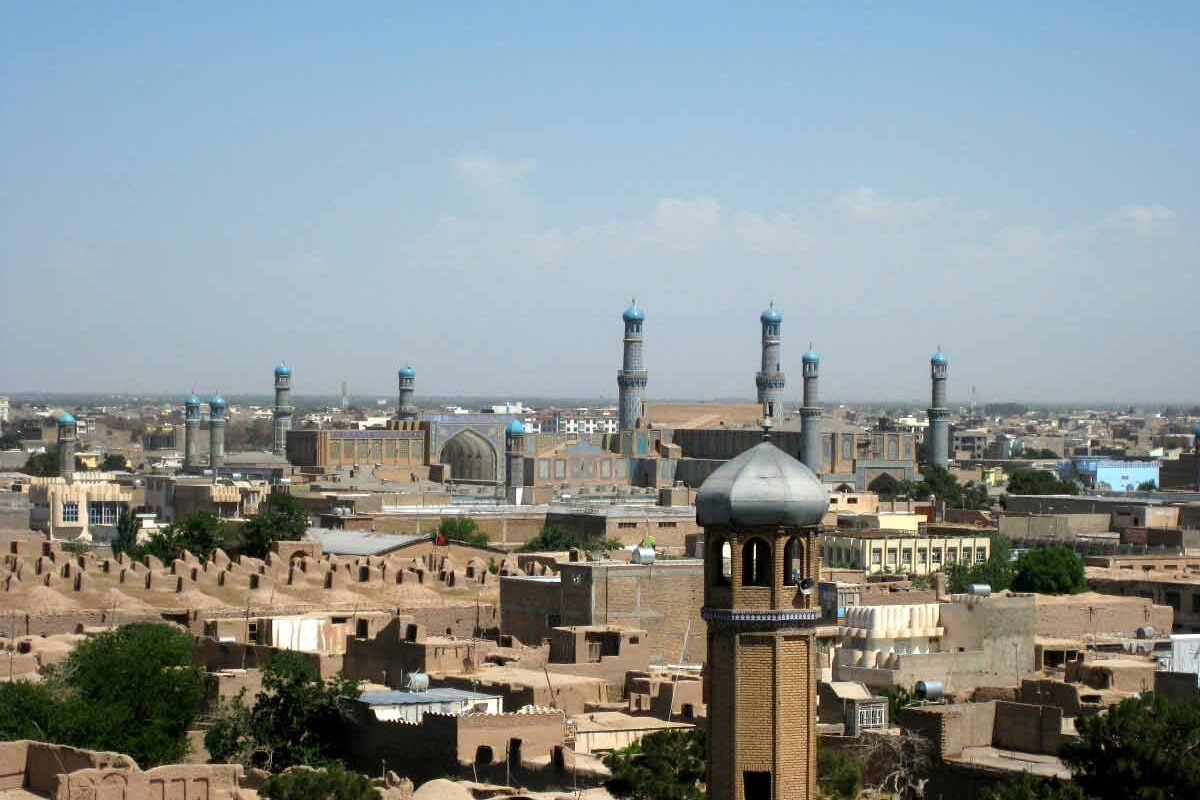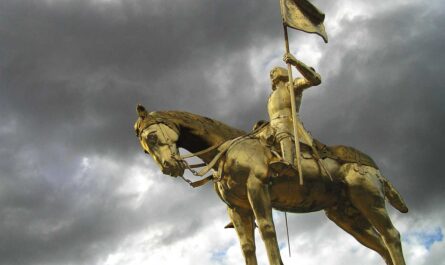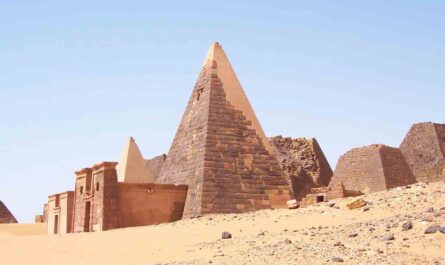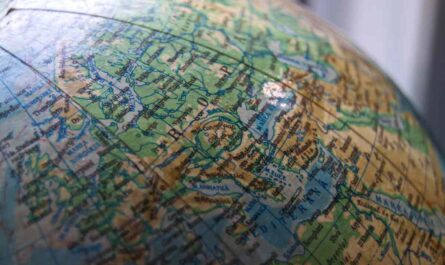What are some of the interesting facts about Mauritania, officially known as the Islamic Republic of Mauritania, is a country located in the western region of North Africa? Bordered by the Atlantic Ocean to the west, it shares its borders with Western Sahara to the north, Algeria to the northeast, Mali to the east and southeast, and Senegal to the southwest. Covering an area of over one million square kilometers, Mauritania is characterized by vast deserts and a sparse population, with its capital and largest city, Nouakchott, situated on the Atlantic coast. The nation’s history is deeply intertwined with the ancient Berber kingdoms, and it has been influenced by Arab and Islamic culture since the 8th century. In this article, I will talk about some interesting facts about Mauritania.
Interesting Facts About Mauritania: History, Culture, Travel
Today, Mauritania is a predominantly Muslim country, with Arabic as its official language and a diverse cultural heritage that includes influences from its various ethnic groups such as the Moors, Fulanis, and Soninkes. Economically, Mauritania relies heavily on agriculture, livestock, fishing, and mineral resources, particularly iron ore. Despite its rich cultural and natural resources, the country faces significant challenges including poverty, political instability, and human rights issues. Here are some interesting facts about Mauritania:
1. Land of Contrasts
Mauritania is a land of striking contrasts, where the immense expanse of the Sahara Desert in the north gradually gives way to the lush, fertile plains of the Senegal River valley in the south, along the Atlantic coast. This dramatic transition in landscapes paints a vivid picture of a country where nature’s extremes coexist. The northern desert, with its rolling dunes and sparse vegetation, epitomizes the harsh, unforgiving beauty of the Sahara. Here, the horizon seems endless, and the silence is profound, broken only by the occasional whisper of the wind.
In stark contrast, the southern regions near the Senegal River valley are verdant and bustling with life. This area supports agriculture and provides vital resources to local communities, demonstrating a surprising fertility amidst the arid surroundings. The Atlantic coast adds another layer to this diverse terrain, where the desert meets the ocean, creating a unique environment where sand dunes cascade into the sea. This confluence of desert, river valley, and coastline makes Mauritania a geographical marvel, offering a unique blend of natural beauty and ecological diversity.
2. Adrar: A Spectacular Plateau
The Adrar plateau, located in the heart of Mauritania’s central desert, is a breathtaking sandstone massif that stands as a testament to the region’s geological and historical significance. This plateau, characterized by its dramatic cliffs, deep canyons, and ancient rock formations, offers a stunning visual spectacle that captivates adventurers and geologists alike. The landscape is punctuated by oasis towns like Atar and Chinguetti, which provide glimpses into the traditional ways of life that have persisted for centuries.
Chinguetti, in particular, is renowned for its historical libraries, which house ancient Islamic manuscripts, reflecting the area’s significance as a center of learning during the medieval period. The Adrar’s rugged terrain is also a playground for outdoor enthusiasts, with opportunities for hiking, rock climbing, and exploring hidden valleys and ancient caravan routes. This plateau is not just a geological wonder but also a living museum, where the natural world and human history intersect in fascinating ways, offering a rich tapestry of experiences for those who venture into its expanse.
3. Nouakchott: The Windswept Capital
Nouakchott, Mauritania’s capital, is a dynamic and windswept city perched on the edge of the Atlantic Ocean. This vibrant metropolis is the political, economic, and cultural heart of the country, bustling with energy and activity. The cityscape of Nouakchott is a blend of modern architecture and traditional Mauritanian designs, reflecting the country’s journey towards modernization while honoring its rich heritage. The bustling markets, such as the Marché Capitale and the lively fish market, are hubs of local commerce and daily life, where the aromas of fresh produce, spices, and seafood mingle in the air.
The coastal location of Nouakchott also means that the city is frequently kissed by ocean breezes, which offer a refreshing respite from the heat of the desert. Additionally, the city is home to important cultural institutions and government buildings, including the National Museum, which houses artifacts that narrate the history and cultural evolution of Mauritania. Nouakchott’s unique blend of modernity and tradition, along with its strategic coastal position, makes it a captivating city that embodies the spirit of Mauritania.
4. The Richest Iron Ore Reserves in Africa
Mauritania is endowed with some of the richest iron ore reserves in Africa, which play a crucial role in the country’s economy. The vast iron ore deposits, primarily located in the region of Zouerate, are among the highest quality in the world, making Mauritania a significant player in the global iron ore market. The mining industry, particularly the extraction and export of iron ore, is a major source of revenue and employment for the country, contributing substantially to its GDP. The mining town of Zouerate and the iron ore trains that transport the minerals to the port of Nouadhibou are vital components of this economic sector.
These trains, among the longest in the world, traverse the harsh desert landscape, symbolizing the industrial might and resilience of Mauritania. The wealth generated from iron ore mining has enabled investments in infrastructure and social programs, though the sector also faces challenges such as fluctuations in global commodity prices and the need for sustainable mining practices. Nevertheless, the iron ore reserves are a cornerstone of Mauritania’s economy, providing the financial backbone that supports the nation’s development aspirations.
5. The Legacy of the Almoravid Dynasty
The historic city of Chinguetti stands as a monumental testament to the legacy of the Almoravid dynasty, reflecting its profound influence on Islamic scholarship and architecture. Once a thriving center of trade and learning during the medieval period, Chinguetti was a key stop on the trans-Saharan caravan routes. The city’s ancient libraries, which house thousands of manuscripts on subjects ranging from theology and astronomy to mathematics and medicine, highlight its historical importance as a beacon of knowledge and education.
The architecture of Chinguetti, with its distinctive Saharan adobe buildings and intricately carved wooden doors, offers a glimpse into the city’s glorious past. The Friday Mosque, with its iconic square minaret, is one of the most enduring symbols of Islamic heritage in Mauritania. Although Chinguetti has faced challenges over the centuries, including desertification and declining populations, efforts are being made to preserve its cultural and historical treasures. The city’s enduring legacy continues to inspire scholars and visitors, reminding them of the rich intellectual and cultural heritage that once flourished in the heart of the Sahara.
6. The Importance of Dates
Dates hold immense importance in Mauritania, both as a staple food and a crucial source of income for many communities. The harsh desert climate of the country makes date palms one of the few crops that can thrive, providing a reliable source of nutrition and sustenance. Dates are rich in essential nutrients, including carbohydrates, fiber, vitamins, and minerals, making them an indispensable part of the Mauritanian diet. They are often consumed fresh, dried, or used in traditional dishes and sweets. The cultivation and harvesting of dates are labor-intensive processes that involve entire communities, from planting and tending to the palms to collecting and processing the fruit.
This agricultural activity not only supports local economies but also fosters social cohesion as families and neighbors work together. In regions like Adrar, where date farming is particularly prevalent, the annual date harvest season is a time of communal celebration and economic boost. Additionally, dates are exported to other countries, contributing to Mauritania’s economy and enhancing its trade relations. The date palm, thus, symbolizes resilience and sustenance, deeply embedded in the cultural and economic fabric of Mauritania.
7. The Threat of Desertification
Desertification poses a significant and ongoing challenge for Mauritania, severely impacting agricultural production and the livelihoods of many communities. This environmental crisis is characterized by the relentless advance of desert sands, which encroach upon arable land, rendering it barren and unproductive. Factors contributing to desertification include climate change, deforestation, overgrazing, and unsustainable agricultural practices. The consequences are dire, leading to reduced crop yields, loss of pasture for livestock, and displacement of rural populations. Efforts to combat desertification in Mauritania involve a combination of traditional knowledge and modern techniques.
Programs aimed at reforestation, the creation of windbreaks, and the promotion of sustainable farming practices are critical in mitigating the effects of desert encroachment. International aid and cooperation are also vital in supporting these initiatives. Despite the severity of the threat, the resilience of Mauritania’s people shines through as they adapt and innovate to protect their land and secure their livelihoods. The fight against desertification is not just about preserving the environment but also about ensuring the future stability and prosperity of the nation.
8. The Importance of Gum Arabic
Gum arabic, a natural resin harvested from acacia trees, plays a significant role in Mauritania’s economy as an important export product used in various industries worldwide. This versatile substance is prized for its emulsifying, stabilizing, and thickening properties, making it a key ingredient in food products, pharmaceuticals, cosmetics, and even industrial applications. Mauritania’s arid climate is well-suited for the growth of acacia trees, particularly in the southern regions, where the collection of gum arabic has become a traditional practice passed down through generations.
The harvesting process is labor-intensive and involves tapping the trees to extract the resin, which is then dried and processed for export. For many rural communities, gum arabic provides a vital source of income, helping to sustain their livelihoods in an environment with limited economic opportunities. The global demand for gum arabic ensures a steady market, reinforcing its importance to Mauritania’s export portfolio. This natural resource not only underscores the country’s agricultural diversity but also highlights the potential for sustainable economic development rooted in traditional practices.
9. The Mauritanian Flag
The Mauritanian flag is a symbol of national identity and pride, featuring distinct green, gold, and red horizontal stripes with a prominent green star and crescent. The flag’s design and colors are deeply symbolic, reflecting the country’s cultural and religious heritage. Green represents Islam, the predominant faith in Mauritania, symbolizing peace and prosperity. The gold stripe signifies the vast deserts and the wealth of natural resources, while red represents the blood shed for independence and the resilience of the Mauritanian people.
The star and crescent, traditional symbols of Islam, emphasize the central role of faith in the nation’s identity. Adopted in 1959, shortly before Mauritania gained independence from French colonial rule, the flag has undergone slight modifications, but its core elements remain a powerful reminder of the country’s history and values. The flag flies proudly over public buildings, schools, and homes, serving as a constant emblem of unity and national pride, reminding Mauritanians of their shared heritage and the principles that guide their nation.
10. The Guelta of Zemmour
The Guelta of Zemmour is a unique and vital oasis nestled within Mauritania’s expansive desert landscape, providing a crucial habitat for diverse birdlife and migrating animals. This natural water source, often found in rocky depressions, is a rare and precious feature in an otherwise arid environment. The guelta attracts a variety of wildlife, including species of birds, reptiles, and mammals, all dependent on its waters for survival. During the migration seasons, the guelta becomes particularly significant as a stopover point for migratory birds traveling across the harsh Sahara.
Its ecological importance cannot be overstated, as it supports biodiversity and maintains the delicate balance of the desert ecosystem. The surrounding area is also of cultural and historical significance, with ancient rock carvings and artifacts that tell the story of human habitation and adaptation in this challenging landscape. For locals, the guelta is not just a natural marvel but a source of life and a testament to the resilience of nature in the face of extreme conditions. Preserving such natural oases is critical for maintaining ecological diversity and the overall health of the desert environment.
21. The Importance of Fishing
Mauritania’s extensive coastline stretches along the Atlantic Ocean, providing fertile waters that support a vibrant fishing industry crucial to the nation’s economy and food security. The rich marine biodiversity, including a variety of fish species, shellfish, and crustaceans, sustains coastal communities and drives economic activity through fishing, seafood processing, and export. Fishing in Mauritania is not only an economic activity but also a cultural tradition deeply rooted in the coastal way of life. However, the industry faces challenges such as overfishing, illegal fishing practices, and environmental degradation, threatening the sustainability of marine resources and the livelihoods of fishermen.
Sustainable fishing practices, including the regulation of fishing quotas, the protection of marine habitats, and the promotion of responsible fishing methods, are essential for ensuring the long-term viability of Mauritania’s fishing industry. Additionally, community-based initiatives that empower local fishermen and promote cooperation between stakeholders are crucial for preserving marine ecosystems and securing the future of coastal communities.
22. The Mauritanian Music Scene
Mauritanian music is a vibrant tapestry woven from Arabic and African influences, reflecting the country’s rich cultural heritage and diverse musical traditions. The music of Mauritania encompasses a wide range of genres and styles, from traditional folk songs and ancient chants to modern fusion and experimental compositions. Central to Mauritanian music are traditional instruments such as the hod houd, a lute-like string instrument, and the tidinit, a drum with a distinctive sound.
These instruments, along with vocals characterized by melismatic ornamentation and rhythmic complexity, create a hypnotic and soul-stirring musical experience. Mauritanian music serves as more than just entertainment; it is a form of cultural expression, storytelling, and communal celebration. It plays a central role in social gatherings, religious ceremonies, and cultural festivals, fostering a sense of identity and belonging among Mauritania’s diverse communities. Despite the challenges of modernization and globalization, Mauritanian music continues to thrive, evolving and adapting while preserving its roots and authenticity.
23. The Importance of Festivals
Festivals hold a special place in Mauritanian culture, serving as vibrant celebrations of tradition, identity, and community spirit. One of the most renowned festivals is the Festival of the Desert, held in the desert town of Merzouga. This annual event brings together nomadic tribes, musicians, artists, and travelers from around the world to celebrate Mauritanian culture through music, dance, camel racing, and traditional ceremonies. The Festival of the Desert is more than just a spectacle; it is a symbol of resilience and cultural pride, showcasing the traditions and heritage of nomadic peoples in Mauritania and beyond.
Other festivals throughout the country celebrate religious holidays, harvest seasons, and cultural milestones, providing opportunities for people to come together, share experiences, and strengthen social bonds. Festivals play a vital role in preserving cultural heritage, promoting tourism, and fostering intercultural dialogue, making them important catalysts for community development and cohesion in Mauritania.
24. The Struggle with Slavery
Despite the official abolition of slavery in Mauritania in 1981, the country continues to grapple with the legacy of this deeply entrenched practice and its social impact. Slavery, in various forms, persists in Mauritania, with marginalized ethnic groups, particularly Haratine and Afro-Mauritanian communities, disproportionately affected. Deep-rooted social and economic inequalities, coupled with weak law enforcement and cultural attitudes that perpetuate caste-based discrimination, contribute to the persistence of slavery-like practices such as bonded labor, forced marriage, and human trafficking.
Addressing the issue of slavery requires concerted efforts at multiple levels, including legal reforms, awareness-raising campaigns, and support for victims and vulnerable communities. Civil society organizations, human rights activists, and international partners play a crucial role in advocating for the rights of those affected by slavery and promoting social justice and equality in Mauritania.
25. The Importance of Education
Education is recognized as a fundamental tool for empowering individuals, fostering economic development, and promoting social inclusion in Mauritania. Despite progress in expanding access to education in recent years, significant challenges remain, particularly in rural and marginalized communities. Low literacy rates, gender disparities, and limited access to quality education pose barriers to the full realization of Mauritania’s human potential.
Education initiatives aim to address these challenges by improving school infrastructure, increasing teacher training, and implementing inclusive education policies that prioritize marginalized groups, including women and girls, children with disabilities, and nomadic populations. Education is not just about acquiring knowledge and skills; it is also a catalyst for social change, empowering individuals to participate fully in society, exercise their rights, and contribute to the nation’s development. By investing in education, Mauritania can unlock its human capital, build a more prosperous future, and ensure that all its citizens have the opportunity to fulfill their potential and live with dignity and purpose.
26. The Potential of Renewable Energy
Mauritania stands on the brink of a renewable energy revolution, with vast untapped potential in solar and wind resources offering unprecedented opportunities for sustainable development. The country’s abundant sunshine and consistent coastal winds make it an ideal location for harnessing renewable energy sources to meet its growing energy needs. Solar power, in particular, holds immense promise, with vast expanses of desert terrain offering prime conditions for solar panel installations and concentrated solar power plants.
Similarly, Mauritania’s windy coastline presents opportunities for wind farms to generate clean, renewable electricity. Embracing renewable energy not only reduces reliance on fossil fuels but also mitigates climate change, promotes energy independence, and stimulates economic growth through job creation and investment opportunities. By investing in renewable energy infrastructure and technology, Mauritania can unlock its full potential as a sustainable energy leader in the region, paving the way for a brighter and greener future for generations to come.
27. Limited Tourist Infrastructure
Mauritania’s rugged landscapes, rich cultural heritage, and pristine natural beauty hold tremendous allure for adventurous travelers seeking off-the-beaten-path experiences. However, the country’s tourism infrastructure remains relatively underdeveloped, presenting challenges for visitors looking to explore its hidden gems. While Mauritania offers unique attractions such as the ancient city of Chinguetti, the Banc d’Arguin National Park, and the stunning Sahara Desert, travelers may encounter limited accommodation options, transportation challenges, and safety concerns.
Despite these obstacles, intrepid adventurers are drawn to Mauritania’s raw and unspoiled landscapes, where they can immerse themselves in traditional nomadic cultures, witness breathtaking desert scenery, and embark on unforgettable adventures. With strategic investments in tourism infrastructure, sustainable development initiatives, and safety measures, Mauritania has the potential to attract a wider range of visitors and unlock the economic benefits of tourism while preserving its natural and cultural heritage for future generations.
28. The Importance of French Influence
French, a legacy of colonialism, continues to play a significant role in Mauritania’s linguistic landscape, serving as an official language alongside Arabic and several local languages. The influence of French extends beyond language to encompass aspects of culture, education, governance, and commerce. Mauritania’s historical ties to France have left a lasting imprint on its society, shaping institutions, legal systems, and social norms. Health books, guides, exercises, habits, Diets, and more
French proficiency is valued in Mauritania for its practical utility in government, business, education, and international communication. Moreover, French cultural influences can be seen in cuisine, fashion, architecture, and the arts, enriching Mauritania’s cultural diversity and global connections. Despite efforts to promote Arabic as the language of national identity and pride, French remains deeply ingrained in Mauritanian society, reflecting the country’s complex colonial legacy and ongoing cultural exchanges with Francophone countries.
29. A Young Population
Mauritania boasts a youthful demographic profile, with a large proportion of its population under the age of 30. This youthful population presents both challenges and opportunities for the nation’s future development and prosperity. On one hand, youth unemployment, lack of access to education, and limited opportunities for skills development pose significant challenges to social inclusion, economic growth, and political stability. On the other hand, young people represent a valuable human capital resource, brimming with creativity, energy, and entrepreneurial spirit.
Investing in education, vocational training, job creation, and youth empowerment programs is essential for harnessing the potential of Mauritania’s youthful population and unlocking their talents and aspirations. By providing young people with the tools, resources, and opportunities they need to thrive, Mauritania can build a brighter future for all its citizens and unleash the full potential of its demographic dividend. Empowering youth to become active participants in society, economy, and governance is key to ensuring sustainable development and prosperity for generations to come.




